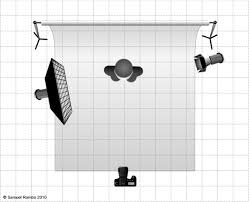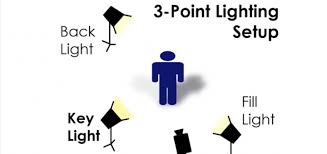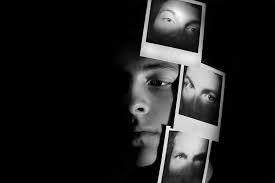Why do we use studio lighting?
we use studio lighting for several reasons, for example we use it to control and manipulate how the light is being used also it helps to create a successful image. Also we use light so that if an image is too dark then we can use the light to brighten the image.
What is the difference between 1-2-3 point lighting and what does each technique provide/solve?
One point lighting is where you use only use one light source in the image, this would mean that only one part of the image is illuminated, it provides shadows. This is the set up of the one point lighting.

Two point lighting uses two light sources – fill and key, They are usually next to each other on opposite ends They both illuminate the object, this is good because if you don’t want any shadows they both eliminate them, here is the set up for two point lighting:

Three point light uses 3 light sources just like two point lighting however they use a back light this is usually positioned behind the object in the corner this is to illuminate the back of the object, this technique can also solve the issue of shadows as they all work together to eliminate them. Here is the setup for three point lighting:

What is fill lighting?
Fill light is form of supplementary light mainly used to lighten shadows in an image. Fill light is often used in portrait photography to create a contrast between the image subject and image background.
What is spill lighting?
They use a reflector to spill the light from one of the light source on to the object this way they have more control over the lighting. The term “spill fill” refers to fill light which results from the footprint of light sources bouncing off surfaces in the shooting environment.
What is Chiarascuro ?
The treatment of light and shade in drawing and painting. is the use of strong contrasts between light and dark, usually bold contrasts affecting a whole composition. It is also a technical term used by artists and art historians for the use of contrasts of light to achieve a sense of volume in modelling three-dimensional objects and figures. Here is an example of this:

